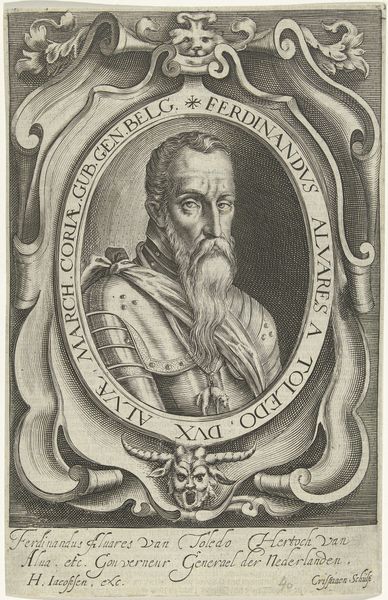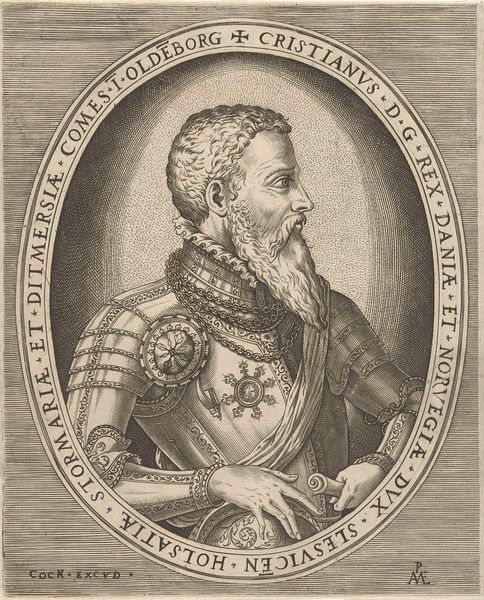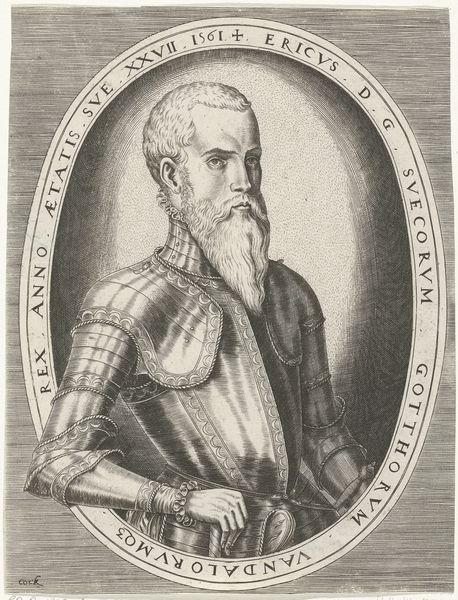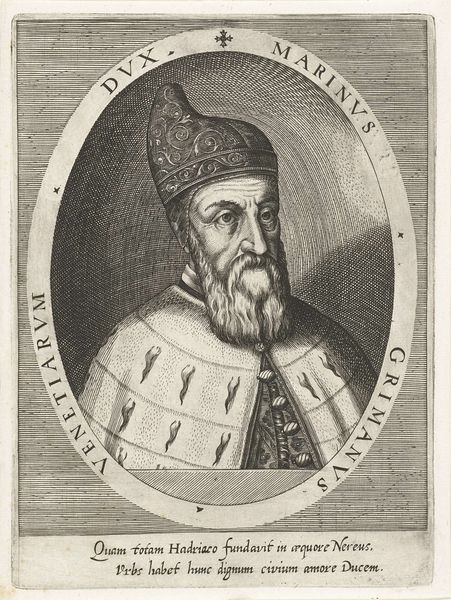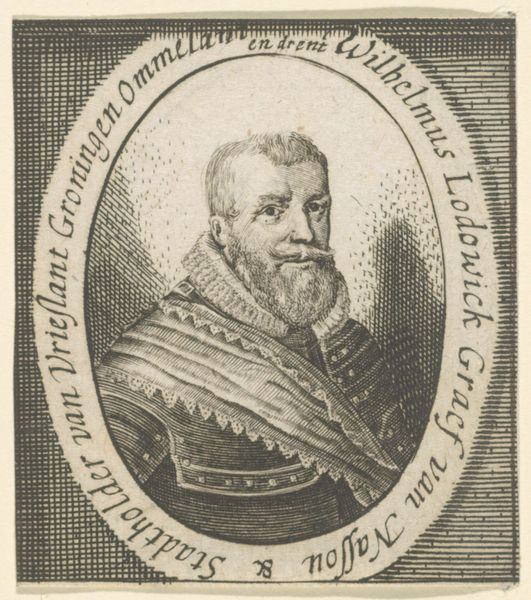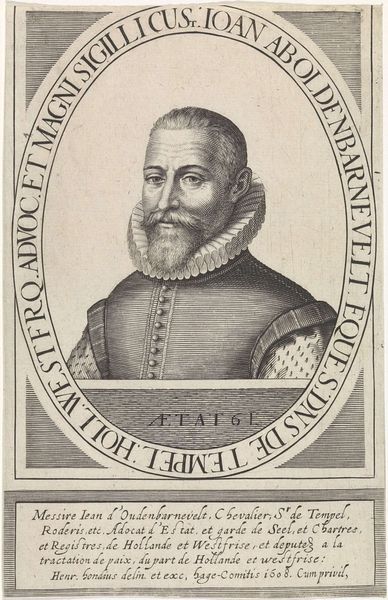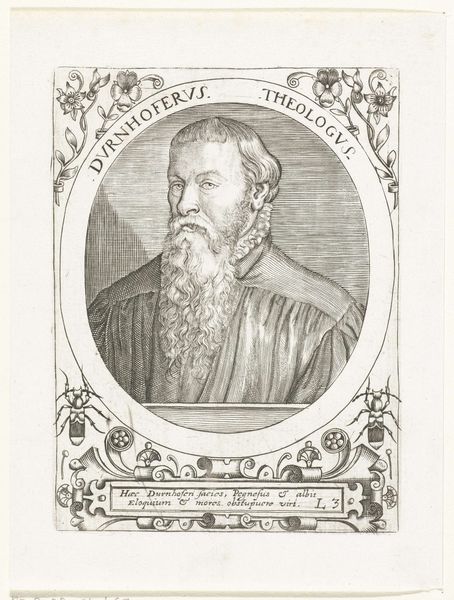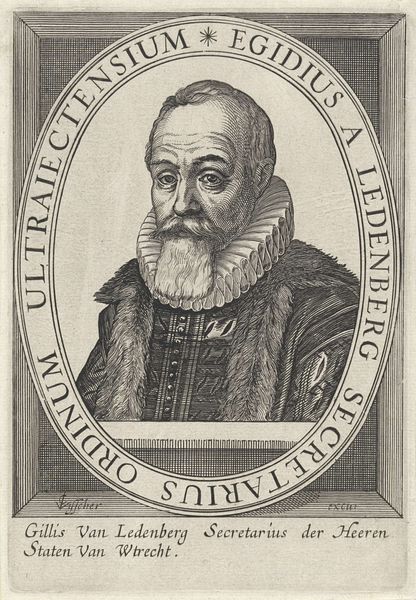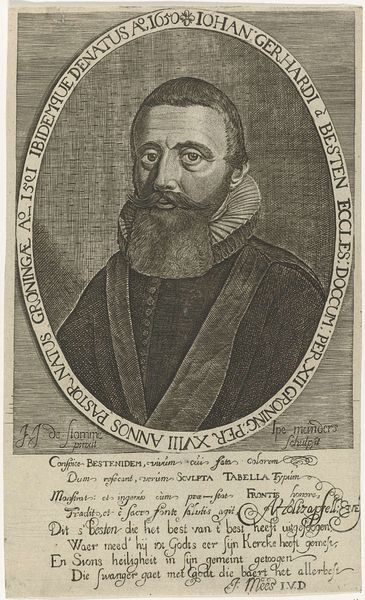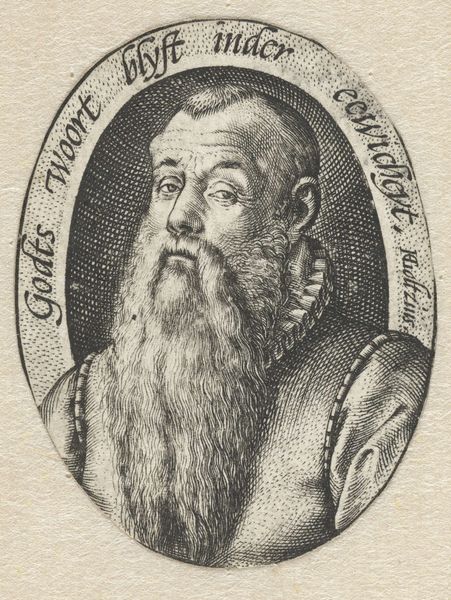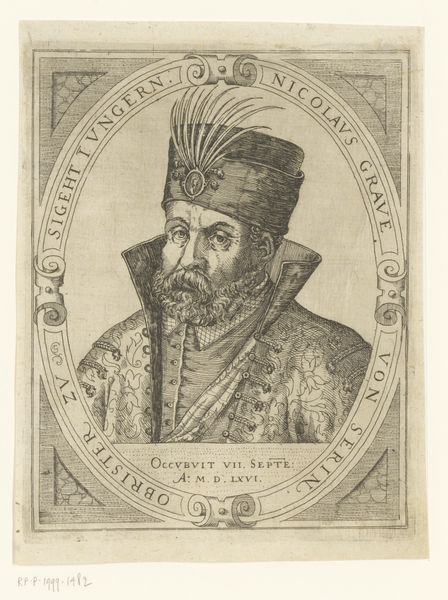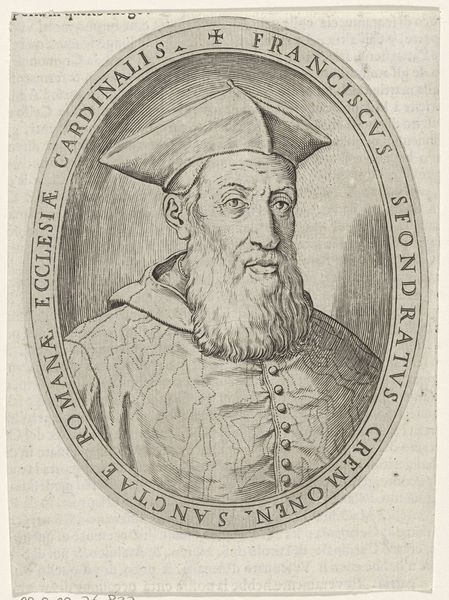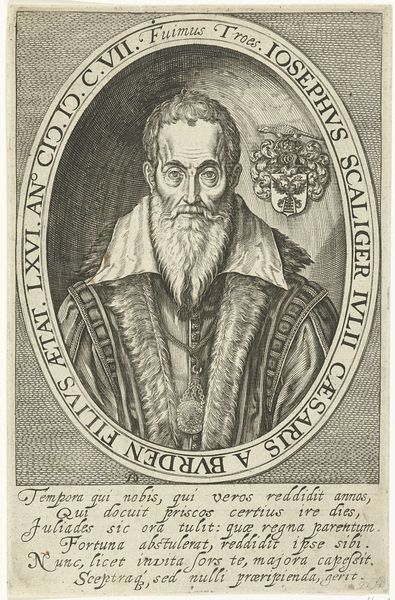
print, metal, engraving
#
portrait
#
toned paper
#
baroque
# print
#
metal
#
old engraving style
#
caricature
#
romanesque
#
portrait reference
#
line
#
portrait drawing
#
engraving
Dimensions: height 173 mm, width 123 mm
Copyright: Rijks Museum: Open Domain
Editor: Here we have a print from somewhere between 1600 and 1604, "Portret van de Romein Camillo Orsini," attributed to Dominicus Custos, currently held at the Rijksmuseum. It looks to be an engraving, likely on metal. It gives off a stoic feel and the detail in the armor is remarkable. What do you see in this piece, considering its material context? Curator: This engraving is fascinating when considering the means of its production and circulation. It's not just about depicting Camillo Orsini; it’s about crafting an image through reproducible media – engraving. We need to examine the economic implications. Who was commissioning these prints, and how were they consumed? Were they disseminated widely, impacting Orsini’s public persona? The choice of metal impacts the number of copies they could practically reproduce. Editor: That's a great point about reproducibility. The texture created by the engraving, does that have any importance in relation to Orsini and his stature at the time? Curator: Absolutely. The texture signifies a level of craftsmanship, labor transformed into art. The intricate details – the armor, the lines of his face – all point to a deliberate act of production meant to signify power, or maybe the illusion of it. But how accessible was this level of detail, of artistic representation, to different strata of society at the time? The material informs not only its visual appearance but also its social reach and consumption. Editor: So, the engraving itself becomes a commodity that reinforces Orsini’s position? Curator: Precisely. Think about the engraver's role. Custos’ labor, his skill, are all embedded in this object. We can understand it, partially, as an early form of mass media – an object deeply entwined with social and economic currents. The choice of the medium really shaped its accessibility and purpose. Editor: That’s really insightful, looking at it not just as a portrait, but as a produced object with social implications.
Comments
No comments
Be the first to comment and join the conversation on the ultimate creative platform.
